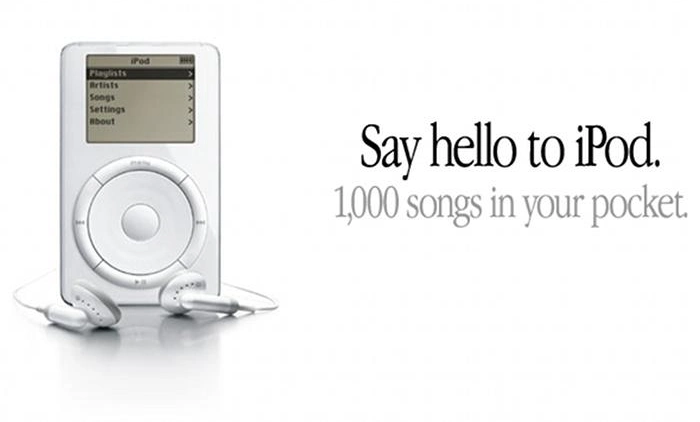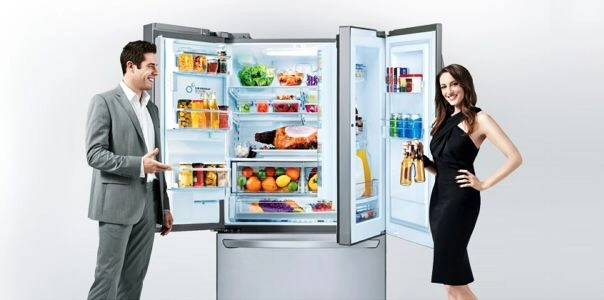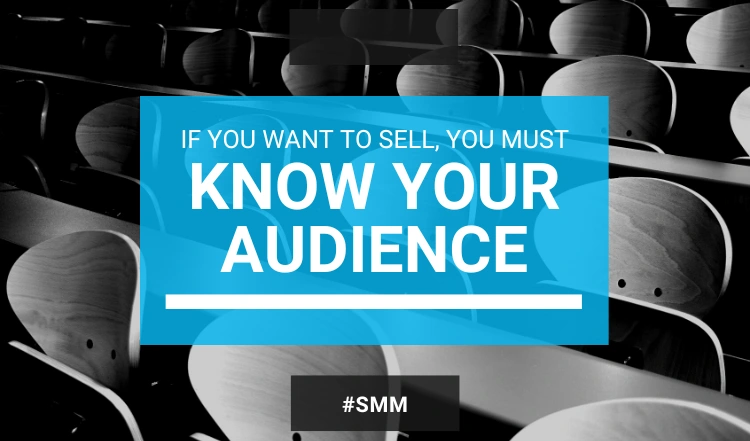You may have heard businesses talk about how important it is to know your audience and competition. But was it ever clear what people mean by that?
The question you need to ask here, is:
How can I define unique value that makes me more attractive to my audience?
The point here is that if you are making products for a certain audience, you have to know them and their needs. So, what you need to do is to connect the features to the benefits. This is the way to paint the whole picture about your product.
By listing the benefits, you’ll make your product more appealing.
Start out by asking the following two questions:
- Why does this feature exist?
- What’s in it for the customer?
Your audience needs to be able to connect the product benefit list to their needs.
Your role as a copywriter is to connect your product’s features to your audience to make it resonate with them. And writing copy that highlights the benefits will help make those connections.
Do Your Market Research The Right Way
Get to really know your audience and give yourself the time to listen to what the audience needs. This may be the key to write the excellent copy you need for your social media platforms.
The most compelling and effective marketing copy comes from audience language, not copywriter brains.
Copywriting is not about just taking a wild guess at what people want. It is about listening, paying attention to the language your audience uses, and building that language into high converting copy. And that’s how you write great copy. But this requires a lot of research.
As every successful marketer will tell you, you must read your customers’ minds and steal their own words.
World-renowned copywriting and marketing expert, Joel Klettke, put together some of the best examples:
- “Sales made simple” vs. “You hate guesswork and busy work – so we made sales less work”
- “Affordable time tracking payroll software” vs. “The only time tracking tool that pays for itself”
- “Break through native reporting limitations” vs. “Get the reports your CRM can’t give you – without the headache it does”
In each of the examples above, the second version of the copy is audience research, meaning it’s exactly what your potential buyers are after. And, it’s far more captivating than the first boring versions.
People don’t care about synergies or features. They care about how your product or service will benefit them. How will what you offer change their lives or make their daily existence a bit better?
The secret is to identify what people care about.
And that’s exactly what you need to write about.
Here are some affordable market research techniques you can try to get inside the heads of your target audience and give them exactly what they want to buy:
- Quora
- Amazon book reviews
- Social media posts including comments
- Surveys
- Facebook groups
- Competitors
- Behavior and analytics
- Interview your audience
Understanding The Difference Between Features And Benefits

Apple doesn’t make the iPod anymore, but when they did, it was HUGE. Look at the ad above and what do you notice. It’s not listing the feature in terms of how much disk space it has, instead, they focused on the benefit. 1,000 songs in your pocket. That’s a lot more engaging and easier to relate to than saying it has 5 GB of disk space.
They showcased the benefit, instead of the feature.
Features - Something that your product is, has, does. Features are basically facts about products or services, and they add credibility to your product.
Benefits - The value your product can bring to the customers. The benefits show customers the reason they should buy your product, by explaining how your service or product can improve their lives.
Look at the photo below. You’ll see the Jargon description of the iPod, the features of the product listed on the right of the photo: “Today we’re introducing a new, portable music player that weighs a mere 6.5 ounces….”

So, at the Jargon description, you can clearly see the unique selling points of the new and innovative device. The problem is the description was technical and complex. And it was all about the product’s features.
What else do you need to get noticed and make a sell? You need benefits!
Here’s how it goes:
“Today, we’re introducing a new, portable music player that weighs a mere 6.5 ounces….”
SO WHAT?
You’ll have “1,000 songs in your pocket.” – that’s why you should care.
It’s a simple, inspiring, and bold reason why you should care about the new iPod. It makes you notice the product, listen to what the brand has to say, and… make you act (purchase the product). Not because of the long list of features (which obviously is a must – you need features, too), but because of the benefits.
So, how do you turn features into benefits?
By answering these magical questions:
- So what?
- What’s in it for me?
Many times, features and benefits can look very similar; therefore, it can be hard for marketers to tell the real difference. But here’s something to remember: the greatest difference between features and benefits is the emotional element that your consumers can relate to.
When it comes to marketing campaigns for promoting a product or service, there are two approaches you can opt for. One approach can be to focus on describing your product/service, highlight how amazing it is, what it does, how it works. Another approach can be the one where you focus on highlighting the benefits of the product/service, and how it can improve your consumers’ lives.
Now, which one of the two approaches do you think will work best in your campaign?
I think you may already know but read on to find out more.
So, let’s look at features that describe your product versus the benefits your product brings. How can these two elements make such a difference when you are trying to sell something as a company.
The first and most important thing to remember here is this: no one cares about you or your product. No matter how many times a so-called marketing guru tells you otherwise.
Your customers don’t want to hear you describing how great your product is. That’s not important to them. And your customers aren’t idiots. They know that you already think your product is important.
What’s important is for your buyers to know the benefits of your product, what value you can bring to their lives with what you are selling.
You need to figure out how to talk about your product, without talking about your product.
Sounds difficult, but there are ways you can do that without overcomplicating matters.
Features don’t work on their own!
Describing features just won’t work. Why? Because they don’t appeal to the emotional side of your consumers. Features are generally technical information that most of the time can confuse people or can simply be difficult for people to understand.
Features work on a factual level, not on an emotional one. And, emotions are the ones that trigger people, not facts. So, don’t focus on technical descriptions, but rather on the benefits your products can provide, and the reasons customers should buy your product.
Good, persuasive copy should have a mix of features and benefits.
Let’s imagine you are trying to sell a door-in-door refrigerator. One of its features is that it gives you access to the items stored on shelves just inside the door.

“Our door-in-door refrigerator gives you access to the items stored on shelves just inside the door.”
So what?
Quick access without opening the entire door and letting out all the cold air.
So what?
Handy whether you have a houseful or just the habit of standing with the door opened.
So what?
Life is stressful enough as it is. Don’t waste your food by allowing it to get spoiled faster from the hot air that gets in every time you open the door just to grab a soda. Keep your food fresh for longer. Get the items stored on shelves just inside the door faster and without affecting the rest of your food inside the fridge.
Here’s how mixing features with benefits looks like in this case:
Option 1:
Tired of wasting food that gets spoiled too fast in your fridge?
Check out our door-in-door refrigerator! It gives you access to the items stored on shelves just inside the door. And, it’s handy whether you have a houseful or just the habit of standing with the door opened.
Option 2:
Want quick access to your fridge without letting out all the cold air?
Our door-in-door refrigerator gives you access to the items stored on shelves just inside the door. Handy whether you have a houseful or just the habit of standing with the door opened.
Option 3:
Want quick access to your fridge without letting out all the cold air?
Get the items stored on shelves just inside the door faster and without affecting the rest of your food inside the fridge. Keep your food fresh for longer! Now you can – with our new door-in-door refrigerator.
How about another example?
“We design unique children’s rooms.”
So what?
Your children will have a beautiful room that will express their personality.
So what?
Your children will have a room that they enjoy and feel safe and cozy in.
So what?
They will grow up feeling special and one of a kind – because all kids are unique.
So what?
You won’t have to worry about design and style, we take care of it all. We’ll make sure your child’s room is exactly what (you and) your daughter or son wished for.
So what?
Give your child a room is up-to-date with the latest design trends.
So what?
In a world where there’s instability and worries, we can help you give your children the stability and comfort of a home right in their room. Give them their little corner of heaven. Teach your children that dreams do come true sometimes. And give your child the room that is up-to-date with the latest design trends.
Here’s how mixing features with benefits looks like in this case:
Option 1:
You want your child to grow up feeling special and one of a kind.
Well, it all starts at home.
That’s why we design beautiful, unique children’s rooms that express your child’s personality and provides the atmosphere they will feel comfortable in.
In a world where there’s instability and worries, we can help you give your children the stability, joy and comfort of a home right in their own room.
Option 2:
Want to give your children their little corner of heaven at home?
We design beautiful, unique children’s rooms that do just that.
You won’t have to worry about design and style, we take care of it all. We’ll make sure your child’s room is exactly what you and your daughter or son wished for.
Teach your children that dreams do come true sometimes.
Option 3:
“My room isn’t trendy enough, Mom!” – does that sound familiar to you?
Well, maybe it’s time you give your child the room that expresses her/his personality and is up-to-date with the latest design trends.
You won’t have to worry about design and style, we take care of it all. We’ll also make sure your child’s room is exactly what your daughter or son wished for. With us, you can give them their little trendy corner of heaven.
The ‘So what?’ trick works every time and will help you find the benefits faster and more accurately. And once you find the benefits, you’ll be able to connect to your customers wants and needs. Which is exactly what you need to make a sale.
Market research can be your secret tool.
Find out:
- What do your customers/consumers love about your product or services?
- How are they using your products/services?
- What do they wish for?
- What are the (secret) desires of your target audience?
What you could do is look at actual reviews, comments, emails, and any other user generated feedback that you’ve received regarding each feature. Why?
Because you can’t efficiently provide a benefit if you have no clue what problems your consumers are having. So, make sure to take the time to get to know your target audience and find out how your product/service can be the solution to their problem.
The benefits you offer should be different for each problem and for each target audience.
Keep in mind that when consumers spend money, there’s always an emotional response involved. That doesn’t mean features are not important. They are. But they should not be the primary selling point of your copy.
Your copy needs to be attention-grabbing, attractive. And the best way you can achieve that is by appealing to emotion.
If you manage to engage your audience, establish a relationship through emotional approach, you’ve got yourself some loyal customers.
Know Your Competition - Focus On Your USP (Unique Selling Proposition)
What is a USP?
A USP is what makes your brand and its products/services different. It is that specific thing you offer that no-one else does in your market.
So, if you have a business, you should have a USP (unique selling proposition) that differentiates you from the crowd.
Otherwise, you’re simply lost in the crowd with little hope of being noticed.
Here are 3 things you need to focus on when getting to know your competition:
- How your competition affects your copy
- What you can do to stay ahead
- How to make your copy stand out by focusing on your USP (Unique Selling Proposition)
After conveying your benefits, you also need to look at your weaknesses. But before that, you need to:
Assess your market. How? Simple. Find out:
- What are your competitors saying about themselves?
- What are your competitors saying about you?

To write compelling copy, you need to know what differentiates your product from the product of the competition.
You need to ask yourself: What is my competitor’s weakness? – Once you know your competitor’s weakness(es), you can make sure that the audience also knows them – and understands why buying their product is a bad idea.
But be aware, caution is required! Otherwise, things can turn against you. Also, make sure you know what you are doing and are prepared to handle things like a professional.
How do you find out what your competitor’s weakness is? Start with:
- Research your competition – find out what they offer in terms of products and services.
- List their inferior elements – feel free to tear the competition apart, but be realistic in your comparisons. You need to be able to support your claims in case you’ll be challenged – and chances are you will be.
If you are providing services that your customers can get from several other businesses, how do you convince them to choose you over them?
One way to do that is to:
- Create a specific product or service that targets people with a unique need. Deciding to focus on a narrow section of a potential market is one way to differentiate yourself from your competitors.
- Create your USP (Unique Selling Proposition) – which is simply creating a short description of your product or service that allows customers to understand what you do and why they should choose you over your competitors.
You can also create a USP in each situation, when a change is required in your company regarding any of your products or services. In this case, you can focus on turning a negative situation into a positive one – and that could define your new USP.
For example, if there was something wrong with your product, you could fix things by saying:
“We listened to your complaints, we’ve made a change, and now we think our product is much, much better.” In this situation, this could serve as your USP.
Here’s an approach when creating your USP (3 sections of the approach):
- We help……. (your target audience)
- Do……… (what you help them accomplish)
- Even if ……… (the worst-case scenario happens)
Example of USP with the 3 sections included:
“We help businesses (target audience) launch great websites (do/what you help them accomplish) even if they have zero skills (the worst-case scenario happens)”
Your USP is not your motto or your tag line.
It’s simply a short statement (like a succinct and persuasive sales pitch) of why someone should choose you over a competitor.
Basically, a USP is a fancy way of saying: “This is what makes us better than the other guy”.
The point is, if all products are the same, your customers won’t know which one is right for them.
Enter: your USP! So, basically, the USP helps people choose one product over another.
To find your USP, start with a simple question:
“What is it that I offer my customers or clients that my competitors don’t?”
If you know your products well, you’ll know the key differences that make you stand out from your competitors. You need to identify that unique element for your business. Once you’ve done that, this unique element can become the center and foundation of your marketing. And, it will turn into your business’ great story.
USP focuses on 1 of 3 different categories:
- Quality (the best quality products)
- Price (lowest price)
- Service (free returns, or 24 h customer service, etc.)
USPs work best when they:
- Are clear and concise – make your USPs short and easy to understand
- Focus on benefits
- Help you differentiate yourself (from your competitors)
- Build trust
Example: “We help children develop independence, even if they can’t walk or speak”.
USPs are not your tagline, they are what you believe in, and also what you can focus your copy and marketing materials around. It should be a belief that’s simple and easy to remember.





